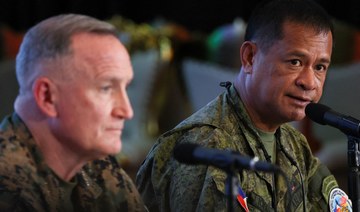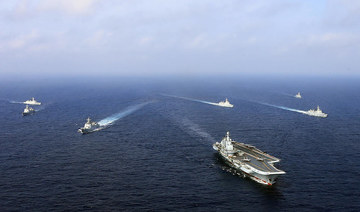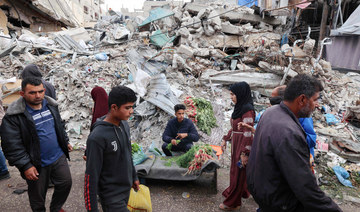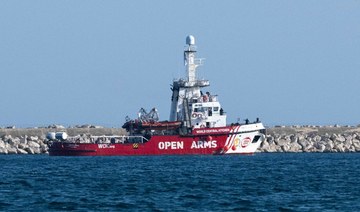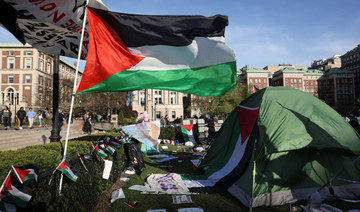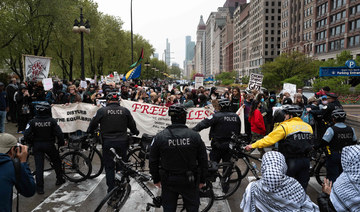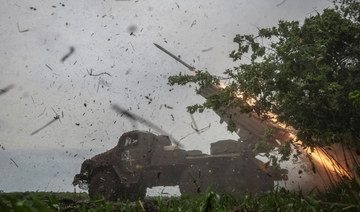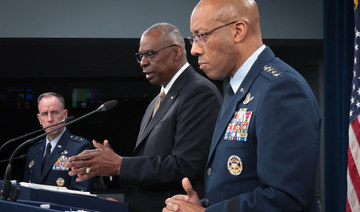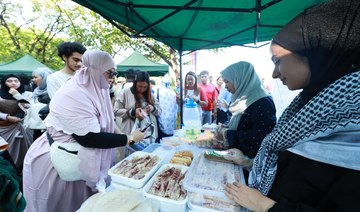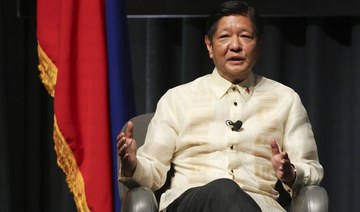WASHINGTON: Melania Trump lit up when a 3-year-old boy darted out of “Family Unit 8” at a migrant center in Tucson, Arizona.
“Hello!” said the first lady, brightening amid the semicircle of eight cells in a short-term holding center for migrants. “How are you?“
Mrs. Trump, an immigrant and a mother herself, wanted to find out more about how her husband’s strict immigration policy was playing out on the ground, especially among families that have been separated at the border. Two tours of migrant detention centers in a week gave her a sometimes grim view.
Now the question is what she does with that knowledge — and how she meshes it with her dislike for dividing up families and a concurrent belief in strong borders.
Spokeswoman Stephanie Grisham says more border visits or talks with lawmakers are possible, but it’s not clear what lessons the first lady took from her visits and what she’ll communicate to her husband.
“She cares about children deeply,” Grisham said. “She also believes in strong border laws and treating everybody equally.”
The first lady has given her husband her views on controversial political issues throughout his presidency, but never in such a public way as with the issue of immigrant children.
Before her husband reversed himself and put a halt to separations at the border, Mrs. Trump’s office put out a statement saying the first lady “hates” to see families separated and expressing hope that “both sides of the aisle” can reform the nation’s immigration laws. She did not say whether she supports the president’s “zero tolerance” policy for criminally prosecuting those who cross the border illegally.
“This is a complex issue,” Grisham said. “She recognizes that.”
The sights and sounds of Mrs. Trump’s visits to border facilities in Texas and Arizona amounted to a hard-to-forget information file about the 2,000 children separated from their families nationally.
Thursday’s visits to a migrant center and a school provided Mrs. Trump with indelible images and facts on the perils for families crossing the desert, the challenges for law enforcement and what happens to illegal border crossers and their children when they are caught.
Despite the camera-ready nature of the events, some of the images were bleak: a cell block, doors open at the time, where minors are sorted into “Families,” “Males” and “Processed” and “Unprocessed.” Six expressionless teenage boys seated on a bench outside their cell. A daycare for children under 2 and a few mothers — also minors.
At a Tucson roundtable with law enforcement officials responsible for hundreds of miles of border, the first lady asked how many children cross the desert alone. One official told her a 16-year-old was raped on her journey into the US and gave birth in federal custody.
Rodolpho Karisch, chief patrol agent for the Tucson Sector Border Patrol, showed Mrs. Trump a picture that appeared to take her aback. He said it represented a 6-year-old boy crossing the desert alone with a soda bottle and a note. Reporters later learned that the boy is alive.
The first lady at times deliberately leaves her message unclear.
On her first trip to the border, her choice of clothing left everyone scratching their heads, with the inscription on the back of her jacket that read, “I really don’t care, do u?“
On her second visit, her wardrobe was understated. But Mrs. Trump didn’t expound on her view of her husband’s immigration policy.
That didn’t stop critics of the Trump administration from lumping her in with her husband.
In Phoenix, as the first lady’s motorcade approached a sprawling Southwest Key migrant facility, protesters lined the sidewalk amid a big inflatable likeness of her husband, dressed in a white robe and holding a hood reminiscent of the Ku Klux Klan.
“Melania Trump is guilty, guilty, guilty!” the protesters chanted of the first lady, who is from Slovenia and came to the United States on a special visa during her modeling career.
Inside, she stopped at an air-conditioned trailer marked No. 4 that held 10 boys and girls around 5 years old.
“Do you like it here with some friends?” Mrs. Trump asked.
“Si,” said one girl.
A few protesters screamed from a nearby balcony that overlooked the compound’s playground as Mrs. Trump’s retinue shifted buildings.
Then came perhaps the most sobering stop, to another cooled room containing nine babies and toddlers, and four of their moms.
Mrs. Trump stepped onto the carpet in her sneakered feet and squatted down to get closer to the children, still sleepy from recent naps. She glanced up toward the women standing nearby and asked, “Who are the moms?” One woman from Honduras raised a hand. “Where is your baby?” the first lady asked. A translator helped the young woman point out a boy, 14 months old. An official traveling with Mrs. Trump said there were 121 children there and their average stay was 48 days.
The balcony was empty by the time Mrs. Trump departed.
At the gates of the compound, some protesters tried briefly to jog alongside the first lady’s motorcade as it sped, lights flashing, toward the airport and the four-hour flight back to Washington.
Melania Trump weighs migrant visits with husband’s policy
Melania Trump weighs migrant visits with husband’s policy
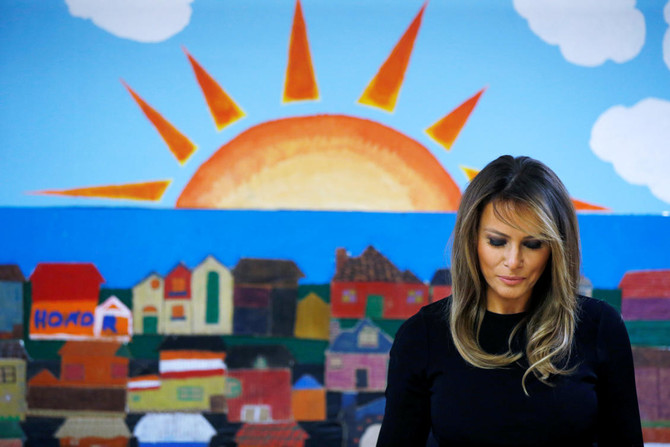
- Melania Trump wanted to find out more about how her husband’s strict immigration policy was playing out on the ground
- Now the question is what she does with that knowledge — and how she meshes it with her dislike for dividing up families
China confronts Japanese politicians in disputed East China Sea area
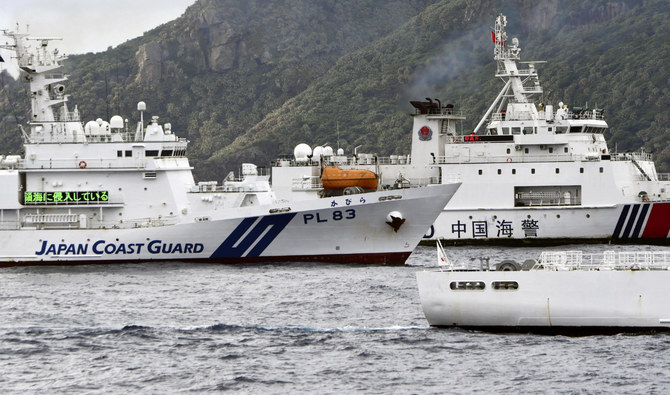
BEIJING/TOKYO: China’s coast guard confronted Japanese lawmakers in waters claimed by both countries in the East China Sea, China’s embassy in Tokyo and Japanese media said on Sunday, the latest in a series of maritime disputes involving China and its neighbors.
Chinese vessels took unspecified law enforcement measures, the embassy said in a statement, adding that it had lodged solemn representations for what it called “infringement and provocation” by Japan near tiny, uninhabited islands that Beijing calls the Diaoyu and Tokyo calls the Senkaku.
The Japanese group, including former Defense Minister Tomomi Inada, was on an inspection mission organized by the city of Ishigaki in Okinawa prefecture, according to the Chinese Embassy and Japanese public broadcaster NHK.
Japan and China have repeatedly faced off around the Japan-administered islands. China also has escalating run-ins with the Philippine navy in disputed areas of the South China Sea, where Beijing’s expansive maritime claims conflict with those of a number of Southeast Asia nations.
Inada’s group spent three hours near the islands on Saturday, using drones to observe the area, and the Japanese coast guard vessel sought to fend off the Chinese coast guard, NHK said.
“The government and the public are aware of the severe security situation,” said Inada, a senior official of the ruling Liberal Democratic Party, according to NHK. “The Senkaku are our sovereign territory and we need to go ashore for research.”
It was the first such inspection trip to the area involving a member of Japan’s parliament since 2013, NHK reported.
Officials of Japan’s foreign ministry were not immediately available for comment outside of working hours.
China strongly urged Japan to abide by what it called a consensus reached between the two countries, stop political provocations, on-site incidents and hyping up public opinion, the embassy said.
It asked Japan to “return to the right track of properly managing contradictions and differences through dialogue and consultation, so as to avoid further escalation of the situation.”
World Central Kitchen to resume Gaza aid after staff deaths in Israeli strike
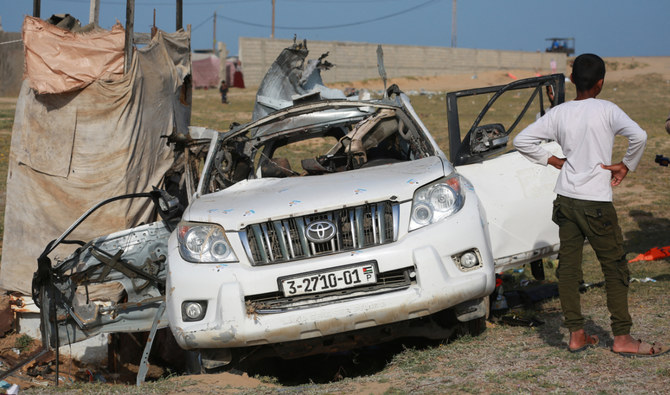
NICOSIA: World Central Kitchen or WCK said it would resume operations in the Gaza Strip on Monday, a month after seven workers of the US-based charity were killed in an Israeli air strike. Prior to halting operations, WCK had distributed more than 43 million meals in Gaza since October, representing by its own accounts 62 percent of all international NGO aid.
The charity said it had 276 trucks with the equivalent of almost 8 million meals ready to enter through the Rafah Crossing and will also send trucks into Gaza from Jordan.
“The humanitarian situation in Gaza remains dire,” said the charity’s chief executive officer Erin Gore.
“We are restarting our operation with the same energy, dignity, and focus on feeding as many people as possible.”
The April 1 deaths triggered widespread condemnation and demands from Israel’s allies, including the US, for an explanation.
Israel said its inquiries had found serious errors and breaches of procedure by its military, dismissing two senior officers and reprimanding senior commanders.
WCK is demanding an independent investigation. Israel’s six-month war against Hamas in Gaza followed an Oct. 7 attack by the militant group in southern Israel when more than 250 hostages were seized and some 1,200 people killed, according to Israeli tallies. Israel’s offensive has killed more than 34,000 people, Palestinian health authorities say, and caused a humanitarian disaster for the enclave’s more than 2 million inhabitants.
“We have been forced to make a decision: Stop feeding altogether during one of the worst hunger crises ever ... Or keep feeding knowing that aid, aid workers and civilians are being intimidated and killed,” Gore said.
“These are the hardest conversations, and we have considered all perspectives when deliberating. Ultimately, we decided we must keep feeding, continuing our mission of showing up to provide food to people during the toughest of times.” (Writing by Michele Kambas; Editing by Andrew Cawthorne)
White House urges ‘peaceful’ campus protests after hundreds arrested
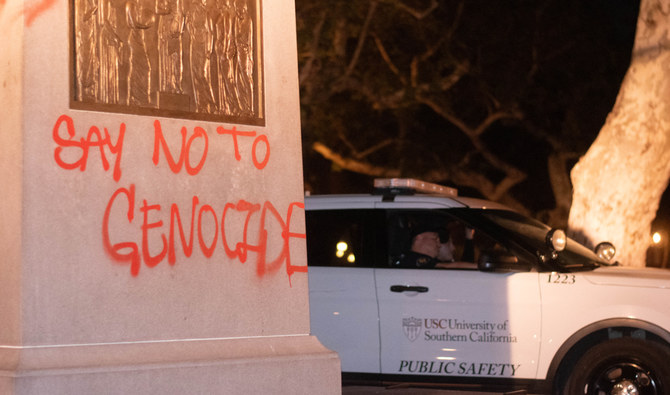
WASHINGTON: The White House insisted on Sunday that pro-Palestinian protests that have rocked US universities in recent weeks must remain peaceful, after police arrested around 275 people on four separate campuses over the weekend.
“We certainly respect the right of peaceful protests,” National Security Council spokesman John Kirby told ABC’s “This Week.”
But, he added: “We condemn the anti-Semitism language that we’ve heard of late and certainly condemn all the hate speech and the threats of violence out there.”
The demonstrations began at Columbia University in New York, but they have since spread rapidly across the country.
While peace has prevailed on many campuses, the number of protesters detained — at times by police in riot gear using chemical irritants and tasers — is rising fast.
They include 100 at Northeastern University in Boston, 80 at Washington University in St. Louis, 72 at Arizona State University, and 23 at Indiana University.
Among those arrested at Washington University was Green Party presidential candidate Jill Stein, who faulted police for aggressive tactics she said provoked the sort of trouble they are meant to quell.
“This is about freedom of speech ... on a very critical issue,” she told CNN shortly before her arrest on Saturday.
“And there they are, sending in the police and creating a riot.”
College administrators have struggled to find the best response, caught between the need to respect free-speech rights and the imperative of containing inflammatory and sometimes violently anti-Semitic calls by protesters.
At the University o Southern California, school officials late on Saturday closed the main campus to the public after pro-Palestinian groups again set up an encampment that had been cleared earlier, the school announced on X.
With final exams coming in the next few weeks, some campuses — including the Humboldt campus of California State Polytechnic University, have closed and instructed students to complete their classes online.
The activists behind the campus protests — not all of them students — are calling for a ceasefire in Israel’s war with Hamas and want colleges to sever ties with Israel.
Ukraine warns front ‘worsened’ as Russia claims fresh gains
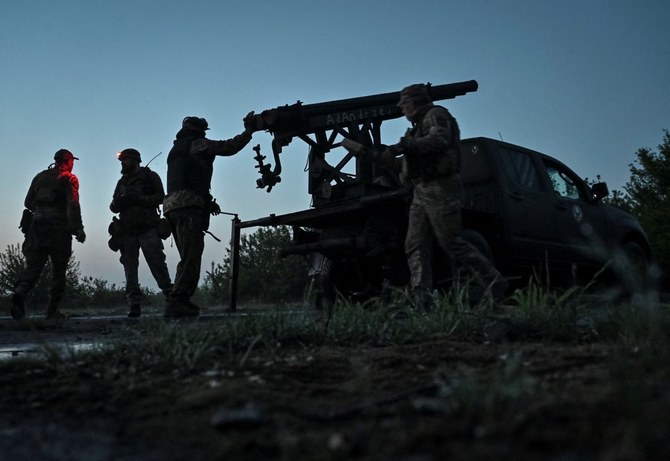
- Russia’s troops are advancing in the eastern Donetsk region
- The US finally approved a $61 billion package of financial aid
VOZDVYZHENKA, Ukraine, April 28, 2024 Agence France Presse: Ukraine’s army leader admitted Sunday that Kyiv’s position on the battlefield has worsened after Russian forces captured another village in the east, pressing their advantage in manpower and ammunition.
Russia’s troops are advancing in the eastern Donetsk region as Kyiv awaits the arrival of much-needed US weapons that it hopes will stabilize the fragile front lines.
“The situation at the front has worsened,” Ukrainian commander-in-chief Oleksandr Syrsky said in a Facebook post Sunday.
Ukrainian troops had “retreated” westwards to new defensive lines in a section of the front that runs past the city of Donetsk, controlled by pro-Russian forces since 2014.
Russia has “a significant advantage in forces and means” and had been able to notch up advances amid “heavy fighting,” Syrsky said.
“In some sectors the enemy had tactical success, and in some areas our troops managed to improve the tactical position,” he added.
Russia’s defense ministry earlier on Sunday claimed its troops had captured the village of Novobakhmutivka in the Donetsk region — around 10 kilometers (six miles) north of Avdiivka, which they seized in February.
The stark assessment of the picture facing Ukrainian troops comes at the end of week of ups and downs for Kyiv.
The United States finally approved a $61 billion package of financial aid after months of political wrangling, unlocking much-needed arms for Ukraine’s stretched troops.
But on the battlefield Russia chalked up more successes.
Its troops managed to make rapid advances in a narrow column to the northwest of Avdiivka.
In the village of Vozdvyzhenka, some eight kilometers from the fighting in Ocheretyne, AFP reporters saw civilians loading a small truck with furniture and belongings on Sunday.
“We’re going a long way from here... I don’t have time to talk because of the shelling,” one of them told AFP, before climbing into the vehicle and speeding out of the village.
Soldiers on the side of a road in the woods said they had originally been sent to build defensive lines.
“But the situation has changed. We were told not to take the shovels but to stay and wait for orders. The Russians are attacking and advancing,” one told AFP, speaking on condition of anonymity.
Syrsky confirmed on Sunday that Russia had made some “tactical” progress in that part of the front, but said Moscow had not yet achieved what he called an “operational advantage.”
He also said additional units were being deployed to replace those that had sustained heavy losses.
The recent setbacks have prompted rare criticism from Ukraine’s military bloggers.
“The (Russian) breakthrough near Ocheretyne revealed a number of problems,” the Deep State Telegram channel, with close links to the Ukrainian army, said in a post on Wednesday.
It said leaders of the 115th mechanized brigade, which is fighting in the area, were “responsible for the collapse of the defense in the entire sector, allowing significant losses.”
Kyiv’s forces are outnumbered across the battlefield, with the country struggling to recruit enough soldiers to replace those who have been killed, wounded or exhausted by the war, now in its third year.
Leaders in Kyiv have warned the military outlook could worsen in the next few weeks, while shipments of US weapons are making their way to the front lines.
“We are still waiting for the supplies promised to Ukraine,” said President Volodymyr Zelensky in his evening address Sunday.
Speaking after talks with Hakeem Jeffries, leader of the Democrats in the US House of Representatives, he said he had once again stressed the urgent need for Patriot anti-missile systems “as soon as possible.”
Ukraine’s head of intelligence at the ministry of defense Kyrylo Budanov said this month that the battlefield situation would likely be at its most difficult in mid-May to early June.
Philippines swelters in scorching heat as mercury hits record high in Manila
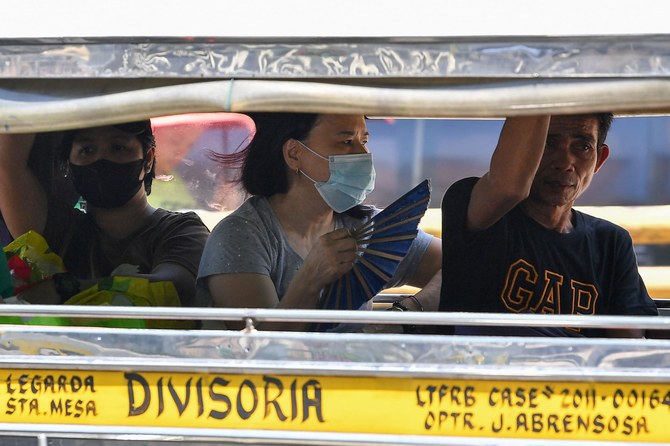
- Children will attend remote classes on Monday, Tuesday in flashback to COVID times
- Temperature in capital’s Metro region could surpass 40 degrees next month, forecasters say
MANILA: The Philippines is bracing for more blistering weather as temperatures in the capital region rose to a record high over the weekend.
Unusually hot temperatures have been recorded across South and Southeast Asia in recent days, forcing schools to close and authorities to issue health warnings.
In Metro Manila on Saturday, the mercury hit 38.8 degrees Celsius, surpassing the previous record set in 1915.
Elsewhere in the country, the weather has been even hotter, with Tarlac province seeing the mercury hit 40.3 degrees earlier in the year.
The hottest ever temperature recorded in the Philippines was 42.2 degrees in 1912.
Glaiza Escullar of state weather agency PAGASA told Arab News it was likely that some parts of the country would continue to see temperatures of 40 degrees and above until the second week of May.
March, April and May are typically the hottest and driest months of the year, but conditions this year have been exacerbated by the El Nino weather phenomenon.
The heat index, which also takes into account humidity, reached 45 degrees on Saturday, which the weather agency classifies as “danger.” It said it could hit 46 degrees on Monday.
“We are issuing a heat index warning just to emphasize that apart from the hot weather or high temperature, relative humidity has a factor in terms of health,” Escullar said.
“If (a person) is dehydrated or he is not in a good condition, the body tends to overheat because the sweating process is slowed down by the high relative humidity.”
In response to the searing heat and a nationwide transport strike, the Department of Education announced on Sunday that all public schools would be closed on Monday and Tuesday but that classes would be held remotely.
Jeepney drivers are staging a three-day strike in protest at the government’s plan to phase out the iconic vehicles.
Many schools in the Philippines do not have air conditioning and several were forced to close earlier this month and hold remote classes in a reminder of the COVID-19 pandemic.
High school student Ivan Garcia told Arab News the soaring heat was affecting his studies.
“The weather is annoyingly hot … I cannot focus on doing my school work,” he said.
Ninth-grader Adrian Reyes said he preferred to work from home.
“I usually leave the house around noontime and it’s really a challenge especially for me and others like me who have to commute to get to school,” he said.
“I prefer the asynchronous mode of learning because we have aircon at home.”


